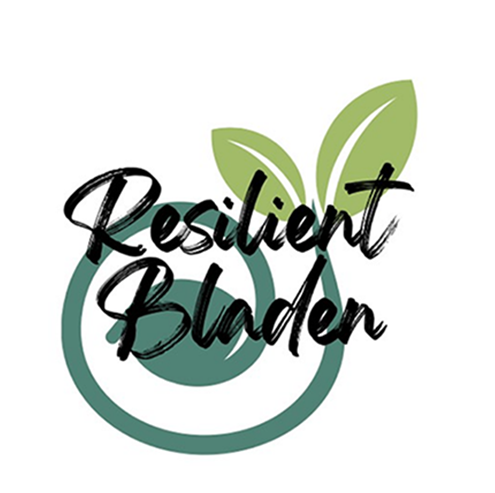By Ivey Schofield
As Bladen County awaits its share of a $26 billion national opioid settlement, officials say they’re ready to put money behind the plan they’ve been working on for the last five years.
In 2017, the county formed a substance misuse task force that created a multifaceted strategic plan to combat alcohol and drug addiction. The plan includes improving coordination among services, implementing a prevention program for school-age children and conducting an intervention service for people who have been arrested and charged with a crime.
Now Bladen is using that plan as the foundation for its $2.76 million allocation from a settlement of several lawsuits that blamed U.S. drug companies for creating and worsening the opioid epidemic.
“I think we’re at a pivotal place,” said Terri Duncan, the county’s health director.
Between 2006 and 2012, 58 opioid pills were prescribed per Bladen County resident each year – one of the highest rates in the state, according to the county’s 2018 strategic plan.
Almost 2,200 residents needed addiction treatment that year, the plan said. That amounted to nearly 7% of the county’s total population.
“I think you’d be hard-pressed to find an individual in Bladen County who has not been affected by substance misuse,” Duncan said.
Bladen County formed the Opioid Task Force after a series of opioid-related deaths. It brought together stakeholders from public health, education, law enforcement, faith-based services, mental health and social services to discuss ways to address the opioid epidemic.
“We reached out to everyone we could,” said Charles Peterson, a Bladen County commissioner and head of the task force. “Everybody’s had the opportunity to be a part of the task force.”
The group’s meetings were typically among the most-attended public meetings in the county, Duncan said
In 2018, the Kate B. Reynolds Foundation awarded the task force a $157,500 grant to conduct a needs assessment. The county then hired Addiction Consulting and Training (ACT) Associates. (The Kate B. Reynolds Foundation funds the Border Belt Independent.)
After holding 14 focus groups and collecting 132 surveys from county residents, ACT Associates presented the strategic plan, which also included changing the name to the Substance Abuse Task Force to encompass addictions to alcohol and other drugs.
ACT Associates updated Bladen County’s 4-year-old strategic plan using $60,000 of the county’s opioid settlement money, which will be distributed over the next 18 years.
There are five main aspects to the updated plan: refund the community paramedic program, implement recovery services, expand early intervention programs for children, support evidence-based addiction treatment and purchase five beds at an upcoming residential facility.
Implementing the programs laid out in the plan is “pretty expensive to do,” said Syd Wiford, principal consultant at ACT Associates. So her agency wrote several grant proposals.
In 2020, the county received a $200,000 grant from Substance Abuse and Mental Health Services (SAMHSA) for a community paramedic program for follow-up conversations after overdoses. In 2021, it received a $1 million grant from the Human Resources Services Administration to implement a prevention program in schools and hire licensed addiction counselors.
In recent years, the county has also received more than $1.2 million in grants from a local nonprofit and the federal government to combat substance misuse.
In addition, the county switched last year from one local management entity, Eastpointe, to another, Trillium, to help coordinate care regarding substance misuse and mental health.
“We’ve really done a number of initiatives to try to address the issue, but it’s still a challenge,” Bladen County Manger Greg Martin said.
The county has a residential program for addiction, but it’s limited. Southeastern Carolina Crossroads, surrounded by pine trees miles from Elizabethtown, is only for men who have already detoxed. The facility accepts patients from more than a dozen states.
“Bladen County is a wonderful community,” administrative director Quentin Boyce said. “If we could get more people involved, it would be beneficial.”
The Healing Place, which is set to open in January in New Hanover County, will be a peer-led residential drug and alcohol recovery facility with 100 beds for men and 100 beds for women.
The county is working with Healing Place, Wiford said, to institute Narcotics and Alcoholics Anonymous meetings and recovery houses for individuals after they leave treatment.
“It’s very important that we don’t just send people to the Healing Place in Wilmington and not get them back,” Wiford said. “But they’ve got to have a sober place to live and work and have some sober support.”
In addition, the county is applying for grants from Trilium for medication lock boxes and Vivitrol, which is a substitute for Suboxone, for residents without insurance. Both drugs are FDA-approved medications that help decrease the withdrawal symptoms.
Wiford said there have been discussions about a shared drug court between Bladen and Columbus counties, but nothing concrete has happened.
“We thought having these strategies that really impact people on a day-to-day basis was more important at this time than putting more money into the criminal justice end of things,” Wiford said. “There’s nothing – nothing – that’s available to Bladen County without the ability to do interventions or have a place for people to go to treatment.”
The task force hasn’t met for at least a year because of the COVID-19 pandemic.
But on Nov. 1, Peterson will gather the group at the Bladen Community College auditorium to start seeking funds and visiting churches to spread the word about the dangers of addiction. The meeting starts at 6 p.m.
Everyone in the county is invited to attend.
Follow Ivey Schofield on Twitter.
For more from Border Belt Independent: https://borderbelt.org/
 Resilient Bladen (NC)
Resilient Bladen (NC)
Comments (0)